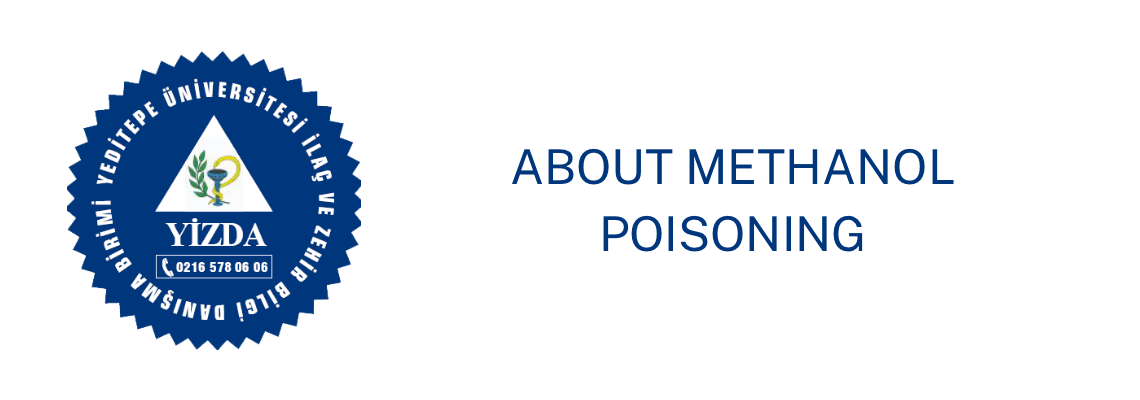
Methyl alcohol (methanol), which is used industrially to make paint thinners, duplicator machine fluid, antifreeze, glass cleaner, is also used illegally in making counterfeit drinks1.
Under normal conditions, alcoholic beverages are prepared with ethyl alcohol (ethanol). However, methyl alcohol, which is very harmful to human health, is added in order to reduce costs and gain more profit in making fake drinks1. According to official records between 1993 and 2001, 271 deaths were seen due to methyl alcohol poisoning2. Between 2002 and 2010, 383 deaths were recorded1. Nowadays there are still reports of methyl alcohol related poisoning cases and deaths.
Methyl alcohol transforms into formaldehyde and formic acid in the body. Methyl alcohol poisoning is due to acidosis that develops as a result of the pH of the blood becoming acidic due to formic acid accumulation. The development of acidosis results in nerve damage in the retina and, consequently, blindness and, in more severe cases, death3. A methyl alcohol blood concentration above 20 mg / dL is considered toxic. While severe effects can be seen at doses above 40 mg / dL, the level of 80-100 mg / dL is generally accepted as the lethal limit level1. In other words, blindness can occur as a result of drinking 4-15 mL (1-3 dessert spoons) of methyl alcohol, and death can occur at a dose of 15-100 mL2,4.
Symptoms of intoxication are seen in the first 5 hours after consuming the counterfeit drink. The first symptoms of poisoning usually begin 10-24 hours after methyl alcohol intake. After 30 hours, severe metabolic acidosis develops. The poisoning caused by the consumption of counterfeit alcohol depends on the degree of acidosis due to the amount of methyl alcohol and the following symptoms occur3:
- Confusion, balance and movement impairments,
- Headache,
- Nausea, vomiting,
- Severe abdominal pain,
- Pain in the back, arms and legs,
- Visual impairments and later on blindness,
- If untreated, metabolic acidosis, coma and death due to respiratory arrest3.
It is not possible to distinguish methyl alcohol and ethyl alcohol by color, odor or taste. This distinction is only possible with analysis methods under laboratory conditions. For this reason, before consuming alcohol-containing products, make sure that the source is reliable.
For more detailed information on the subject, you can find Yeditepe University Vice Rector and Faculty of Pharmacy, Head of the Department of Pharmaceutical Toxicology Prof. Dr. Ahmet Aydın's explanations about methyl alcohol poisoning featured on "Oylum Talu ile Burası Haftasonu" in Habertürk television from the link below.
REFERENCES
- Kurtaş, Ö., Imre, K. Y., Özer, E., Can, M., Birincioğlu, İ., Bütün, C., ... & Yılmaz, R. (2017). The evaluation of deaths due to methyl alcohol intoxication.
- Yayci, N., Ağritmiş, H., Turla, A., & Koç, S. (2003). Fatalities due to methyl alcohol intoxication in Turkey: an 8-year study. Forensic Science International, 131(1), 36-41.
- Olson K, Anderson I, Benowitz N, Blanc P, Clark R, Kearney T, Osterloh J. (2006). Poisoning & Drug Overdose 5th Edition, 260-262
- Moon, C. S. (2017). Estimations of the lethal and exposure doses for representative methanol symptoms in humans. Annals of Occupational and Environmental Medicine, 29(1), 44.
(You can reach all of the articles published by Yeditepe University Pharmaceutical and Poison Advisory Unit by clicking the PEPIRC / YIZDA section under the "Research" title found on the navigation bar.)


